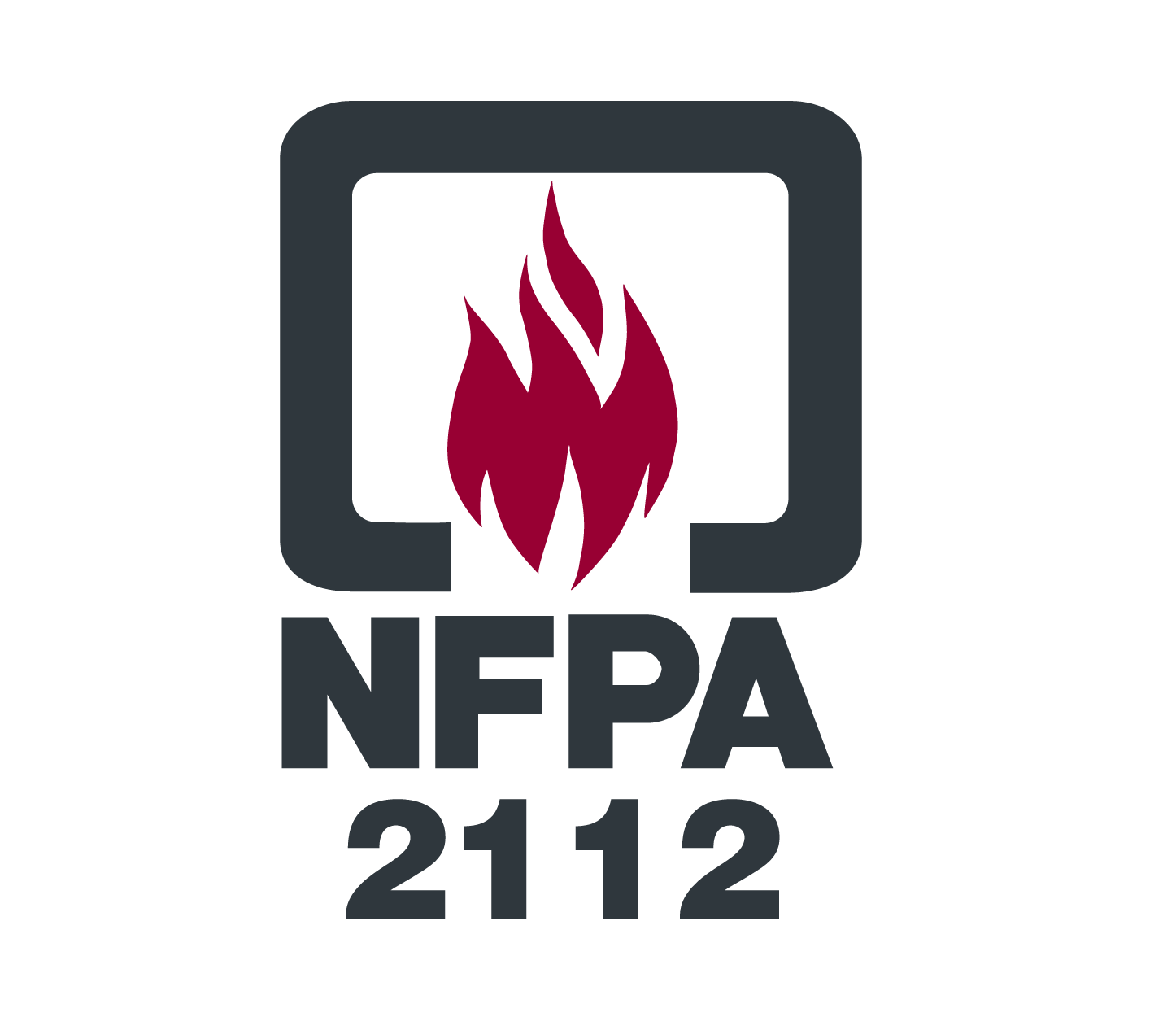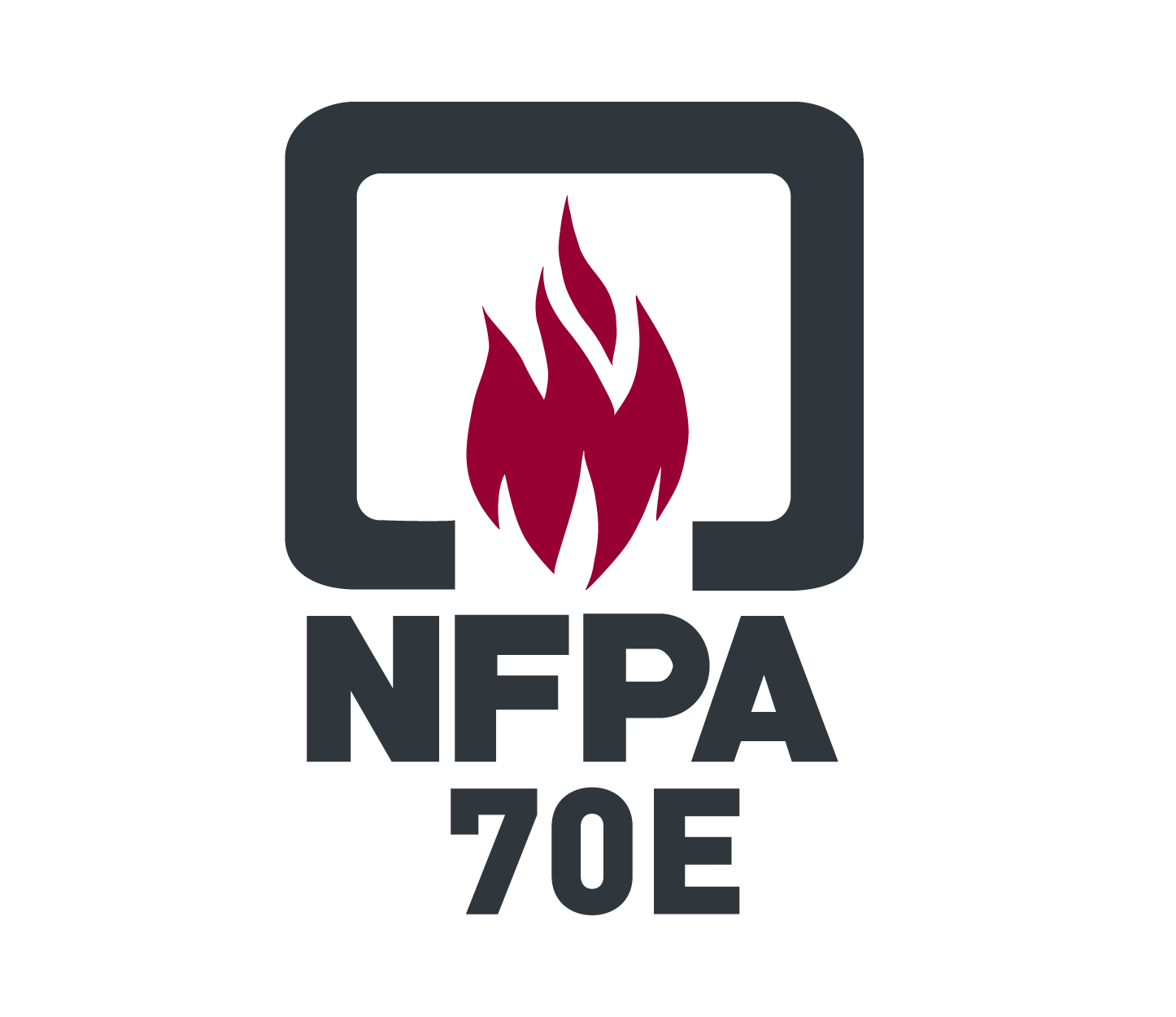
AMERICAN STANDARDS

STANDARD ON FLAME RESISTANCE GARMENTS FOR INDUSTRIAL PERSONNEL PROTECTION AGAINST FLASH FIRE
INDUSTRIES
TEST METHOD
DESCRIPTION
ASTM D2700
The fabric should be tested in its received condition and after undergoing 3 washings.
Requirements for compliance:
Spaced HTP should exceed 25 J/cm2 (equivalent to 6.0 cal/cm2).
Contact HTP should exceed 12.6 J/cm2 (equivalent to 3.0 cal/cm2).
The test involves the application of a combination of radiant and convective heat.
ASTM D6413
The char length should not exceed 100 mm (4 in.). The fabric should be tested in its received condition and after undergoing 100 washings.
Requirements for compliance:
Char length should be less than or equal to 100 mm in any direction.
After-flame duration should be less than 2 seconds.
No melting or dripping should occur.
The test should be conducted over a duration of 12 seconds using methane gas.
The measurement of char length should be performed with different weights based on the fabric’s weight.
Requirements for compliance:
Thermal shrinkage should be less than 10%.
No melting or dripping should occur.
There should be no separation of layers.
The fabric should not ignite.
| Weight of the fabric | Weight to be applied |
|---|---|
| 68 – 203 g/m (2-6 oz/yd²) | 100g (4 oz) |
| 203 – 508 g/m (6-15 oz/yd²) | 200g (8 oz) |
| 508 – 780 g/m (15-23 oz/yd²) | 300g (12 oz) |
| >780 g/m ( > 23 oz/yd²) | 475g (16 oz) |
According to specifications of NFPA 2112 sec 8.4
The fabric should be tested in its received condition and after undergoing 3 washings.
The test is conducted at a temperature of 260ºC for a duration of 5 minutes.
Requirements for compliance:
Thermal shrinkage should be less than 10%.
No melting or dripping should occur.
There should be no separation of layers.
The fabric should not ignite.
ASTM F1930
Manikin Test
The predicted burning area of burn injuries (2nd and 3rd degrees) is 50%.
Three garments should be tested after one washing. The design of the garments is defined by the standard.
The garments are tested along with standard undergarments: briefs of 100% CO weighing 170 g/m2 and a T-shirt of 100% CO weighing 140 g/m2.
The exposure time is 3 seconds.
The final result is the total predicted area of 2nd and 3rd degree burn injuries (excluding feet and hands, but including the head). It should not exceed 50%.
STANDARD FOR ELECTRICAL SAFETY IN THE WORPLACE
INDUSTRIES
Two requirements standard to comply with depending on the final garment application:
ASTM F 1506
Standard Performance Specification for Flame Resistant
and Arc Rated Textile Material For Wearing Apparel
For Use By Electrical Workers Exposed to Momentary
Electric Arc and Related Thermal Hazards.
ASTM F 1891
Standard Specification for Arc and
Flame Resistant Rainwear.
TEST METHOD
DESCRIPTION
ASTM D5034
For woven fabrics:
Fabric weight range of 3 – 5.9 oz/yd²: Breaking load should be equal to or greater than 134N.
Fabric weight range of 6 – 8.4 oz/yd²: Breaking load should be equal to or greater than 179N.
Fabric weight range of 8.5 oz/yd² and above: Breaking load should be equal to or greater than 223N.
ASTM D1424
For woven fabrics:
Fabric weight range of 3 – 5.9 oz/yd²: Tear resistance should be equal to or greater than 11N.
Fabric weight range of 6 – 8.4 oz/yd²: Tear resistance should be equal to or greater than 18N.
Fabric weight range of 8.5 oz/yd² and above: Tear resistance should be equal to or greater than 22N.
ASTM D434
Seam Slippage:
The maximum allowable value for seam slippage is 6 mm.
AATCC 61
Colorfastness to Laundering:
For both woven and knit fabrics, the minimum requirement is class 3 for colorfastness to laundering.
AATCC 132
Colorfastness to Dry-cleaning:
For both woven and knit fabrics, the minimum requirement is class 3 for colorfastness to dry-cleaning.
AATCC 135
Dimensional Change:
For woven fabrics, the maximum allowable dimensional change is less than 3%.
ASTM D6413
The char length should not exceed 150 mm (6 inches).
Each layer of fabric should be tested. A total of 5 samples in each direction should be tested in their received condition and after undergoing 25 washings.
Requirements for compliance:
Char length should be less than or equal to 150 mm.
After-flame duration should be less than 2 seconds.
There should be no melting or dripping of the fabric.
| Weight of the fabric | Weight to be applied |
|---|---|
| 68 – 203 g/m (2-6 oz/yd²) | 100g (4 oz) |
| 203 – 508 g/m (6-15 oz/yd²) | 200g (8 oz) |
| 508 – 780 g/m (15-23 oz/yd²) | 300g (12 oz) |
| >780 g/m ( > 23 oz/yd²) | 475g (16 oz) |
ASTM D3786
For single-layer systems only, three arc test specimens are required to determine the average after-flame duration.
The after-flame duration should not exceed 5 seconds for incident energy equal to or greater than the ATPV (Arc Thermal Performance Value) or EBT (Energy Breakopen Threshold).
ASTM F1959
Arc Rating Test:
For single-layer systems only, three arc test specimens are required to determine the average after-flame duration.
The after-flame duration should not exceed 5 seconds for incident energy equal to or greater than the ATPV (Arc Thermal Performance Value) or EBT (Energy Breakopen Threshold).
The Hazard/Risk Category Arc Rating of Personal Protective Equipment (PPE) is determined based on these test results.
(Incluir cuadro de las categorias)
REQUIREMENTS FOR ASTM F 1891
TEST METHOD
DESCRIPTION
ASTM D3393
FTMS No.191A
Method 5516
The waterproofness of Rainwear Fabric should be able to withstand water pressure without leaking at 207 kPa.
The waterproofness of Seams should be able to withstand water pressure without leaking at 20.7 kPa for a duration of 2 minutes.
For woven fabrics:
Fabric weight range of 3 – 5.9 oz/yd²: Breaking load should be equal to or greater than 134 N.
Fabric weight range of 6 – 8.4 oz/yd²: Breaking load should be equal to or greater than 179 N.
Fabric weight range of 8.5 oz/yd² and above: Breaking load should be equal to or greater than 223 N.
ASTM D1117
Trapezoidal Tearing Resistance Test:
The trapezoidal tearing resistance should be equal to or greater than 6 lb or 26.7 N in both the warp and weft directions.
ASTM D1388
(optional)
Stiffness of Rainwear Fabrics – Cantilever Test (Option A):
The stiffness of the fabric is measured using the Cantilever test. Samples with dimensions of 25 mm x 150 mm are utilized for this test.
AATCC 6413
The char length should not exceed 150 mm (6 inches).
A total of 5 samples in each direction should be tested in their received condition and after undergoing 5 washings.
Requirements for compliance:
Char length should be less than or equal to 150 mm.
After-flame duration should be less than 2 seconds.
There should be no melting or dripping of the fabric.


